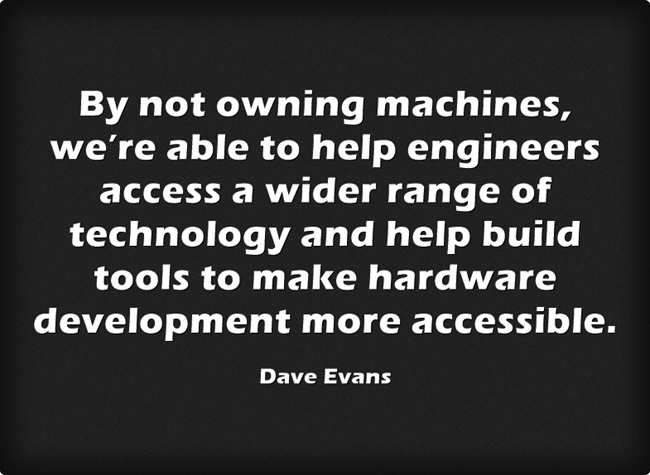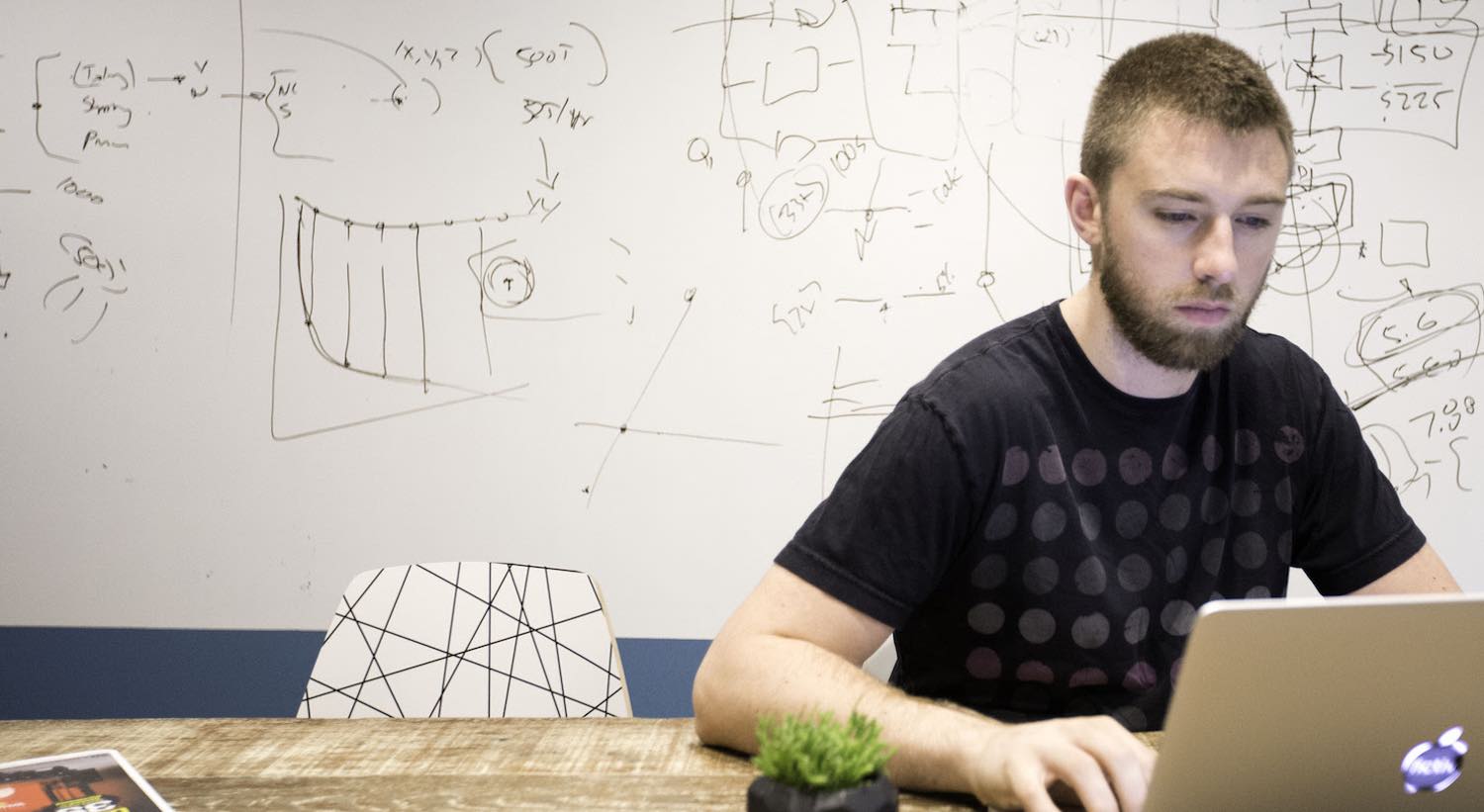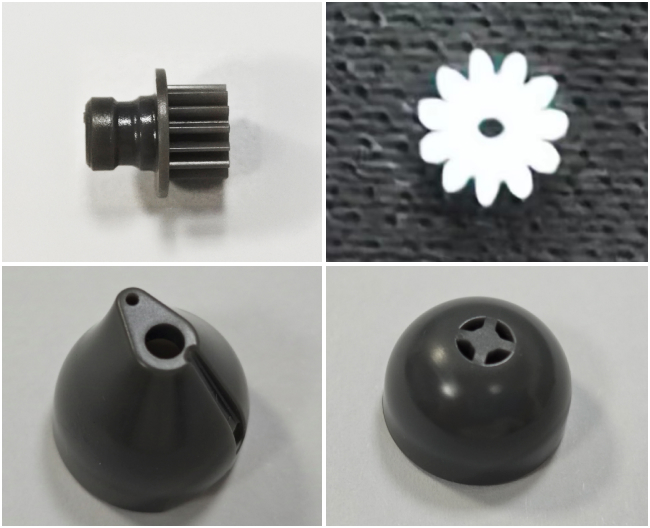Time to read: 7 min
On July 13, Fictiv CEO Dave Evans participated in the Slack hardwarestartup group’s very first AMA. The group was spun off from the popular hardwarestartups group on reddit, and its members love to chat hardware entrepreneurialism. The group is over 500 strong, and you can join here. We’ve recapped some of the most interesting insights and discussions from the live chat.
Intro
Hi everyone, I’m Dave, the CEO and Co-Founder of Fictiv. Fictiv is a manufacturing platform that is the most efficient way to prototype parts. We help engineers and designers fabricate 3D printed parts in 24hours and CNC machined parts in three days.
I started Fictiv out of frustration with the biaises that exist in the manufacturing world. Our mission is to help democratize manufacturing to give everyone access to better tools to produce physical parts. I care about open-source hardware and software and am a big believer that as a founder, if you focus on building a great teams, the product will follow suit.
I love to talk about manufacturing, team culture, open source hardware, and my dog Romeo. Ask me anything!
On Starting Fictiv
Q: How did you prove out your business model?
A: Business models are an ever-evolving beast, but the MVP for Fictiv was when Nate (my cofounder) and I purchased a Makerbot to build our first “network” of 3D printers. This was back in 2013.
We said if we could pay back that machine in a single month, there might be a real opportunity to build a true network of manufacturing machines to help vendors better utilize their machines and give engineers better access.
Three years later, our network consists of mostly industrial-grade machines.

What were the beginning days of Fictiv like? How’d you get this all started?
Man, feels like ages ago!
The beginning days were awesome; we wore so many hats.
Nate and I started in April 2013, and unlike the typical startup story of starting in a garage, since we live in SF, we don’t have a garage. So life started in our kitchen.
The early days were very community driven (as they still are today, but on an entirely different level) and around building our MVP.
I did all of the coding, mfg related stuff, and Nate took care of the business, design, and $$.
What should startups in this entire ecosystem consider when hiring their first few employees?
I think the most important thing in the early days is trust. When you’re first starting off, you’re constantly wondering if the person next to you is working as hard as you are, making the right decisions, etc. So it’s important to really trust and believe in the first few folks you bring on. Like the most important thing, IMO.
What are some of the strategies used to get your brand out?
We really hit the ground and believed in building trust with our community. This meant a lot of meetups, customer visits, blog posts, presentations. etc. The hardware community is such a tight, small group of people.
We wouldn’t be here without the community. and we hope we’re able to give back to it. as well.
On The Fictiv Model
What’s your definition of “open source hardware”?
It’s definitely something that I think folks use too loosely.
OSHA is the best source of truth, IMO, so rather than paraphrasing, here’s what they say:
Open source hardware is hardware whose design is made publicly available so that anyone can study, modify, distribute, make, and sell the design or hardware based on that design. The hardware’s source, the design from which it is made, is available in the preferred format for making modifications to it. Ideally, open source hardware uses readily-available components and materials, standard processes, open infrastructure, unrestricted content, and open-source design tools to maximize the ability of individuals to make and use hardware. Open source hardware gives people the freedom to control their technology while sharing knowledge and encouraging commerce through the open exchange of designs.
In my opinion, it’s very similar to OSS, where it’s about making a technology available to a larger audience to advance innovation.
What differentiates Fictiv from its competitors in the distributed manufacturing domain?
Most of our competitors’ approach is to connect you directly to the printer and is focus primarily on hobbyist-level machines. We are a manufacturing platform that offers 3D printing and CNC machined parts made on industrial-grade machines. Once you order a part on our platform, it’s intelligently routed to an available machine in our pre-vetted network of vendors. That’s how we’re able to guarantee such fast turnaround times 365 days a year!
How do you deal with DFM issues? For example, I’m guessing that you get submissions that cannot be produced with a given process. Who deals with that, and how?
Great question, and it’s something that we spend a lot of time on. We are focused on building a set of tools (software automation + humans) to help deal with this. When you upload a part, we give you feedback (ex: min wall thickness for 3DP) and then allow you to proceed with that caution or to fix the model before purchasing.
Our approach is around education, rather than fixing it for you. If you don’t learn, you’ll just keep making the same mistake.
Is “democratizing” things also the same as, well, getting less production-ready jobs?
Democratizing is really around giving more people access to better tools for building hardware. Since we don’t own machines, we get to focus heavily on the software automation and tools on the DFM side.
Our hope is that we get to allow our mfg’er to focus on what they do best which is actually producing parts, rather than lots of back and forth one-off questions with customers.
eMachineShop originally started with an outsourced manufacturing model and seems to have pulled manufacturing in-house since then. Do you foresee a point in the future where it will make more sense to own some of the manufacturing processes yourself?
I can tell you we firmly believe in not owning machines. By not owning machines, we’re able to help engineers access a wider range of technology and help build tools to make hardware dev more accessible. Additionally, I think it’s really challenging for a single shop to be good at 3DP, CNC, Sheet metal, IM, etc. So many companies do this and really sacrifice the part quality.
Trying out Fictiv for the first time. Interesting you guarantee 24-hour turnarounds. Do you have partners in the Seattle area?
The 24-hr hour turnaround is based on our ability to route your order to an available machine that has capacity today, rather than waiting in line.
90% of our partners are in the Bay Area at the moment, but are working to expand quickly to bring 24-hour turnaround (without shipping) to more areas.
On Developing Hardware Products
We are developing a wearable device and are somewhere between 3D printed prototypes and ready to try injection molding prototypes. I’m currently thinking our next prototype will be cast urethane/silicon. As a maker/amateur machinist, I’m pretty comfortable doing my own prototyping here to get the form right, but after that point, where do you see similar products go? (i.e. using cast urethanes for EVT, or moving quicker to injection molds?) I’m especially concerned with quantities, as I’m fine doing 5-10 tests, but 50? No thanks.
We call the phase you’re entering the “chasm” in hardware dev! I think you have the right approach, from a process standpoint. I would definitely recommend considering where you spend your time—innovating vs. manufacturing, even building five-ten units is expensive, if you consider how much your time is worth!
Here’s an article I wrote a while back on RTV; maybe it’s helpful: fictiv.com/articles/an-overview-of-rtv-molds
Reply: Yeah, chasm indeed! And totally agreed on the time sink standpoint.
Let’s say i have an electrical engineering background and have an idea for a product. I’m all alone right now and just have an idea; what should I do first?
Pen, paper, and foam core are your best friends! It’s amazing what you can do with foam core to prove out a product. Don’t get bogged down with all the ME stuff at this stage.
What is the biggest/most common mistake you see new hardware startups making?
Everyone trying to make their first product look like an Apple product! :stuck_out_tongue:
On Raising Money
Did you go for investment, bootstrap, or another avenue? If investment, I’d be very interested in hearing how you talked with investors around having a hardware-related business, as in your early days you said you were doing 3D printing yourself even. Or am I off base there?
We bootstrapped in the early days and then went for investment to accelerate development ahead of growth. I this it’s important to understand why investors (specifically VCs) put money into companies, which is to see exponential returns. I think that’s why hardware companies have a hard time raising money, since it’s often hard to have exponential growth on a purely hardware company.
How’d you secure investment meetings? Cold calls?
Networking, mostly. My co founder is the guru here, so you’d have to bug him.
If you put yourself out there and have a great idea, I think the right folks will get in touch.
Before 2013, VCs all said “we don’t do hardware,” but now they do fund hardware startups. Software VCs were always looking for the next PayPal to invest in; what are the hardware startups that VCs wish they had invested in?
Well, I think you can look at any of the big exits, and I bet they wish they were in those. Like Cruise, for example. YC company to $1B supposed exit to GM.
I need to jump off here. This has been an awesome AMA!
Conclusion
Thanks for reading the AMA; I hope you learned more about the beginnings of Fictiv, methods for developing hardware products, and hardware funding trends. Check out the popular HWStartup slack group where this AMA was originally hosted, and you’ll also find some fantastic discussions on prototyping, manufacturing, distribution, and much more!
If you’d like to meet Dave in person, come along to our next event, The Invention of Space, on August 16 in San Francisco.











